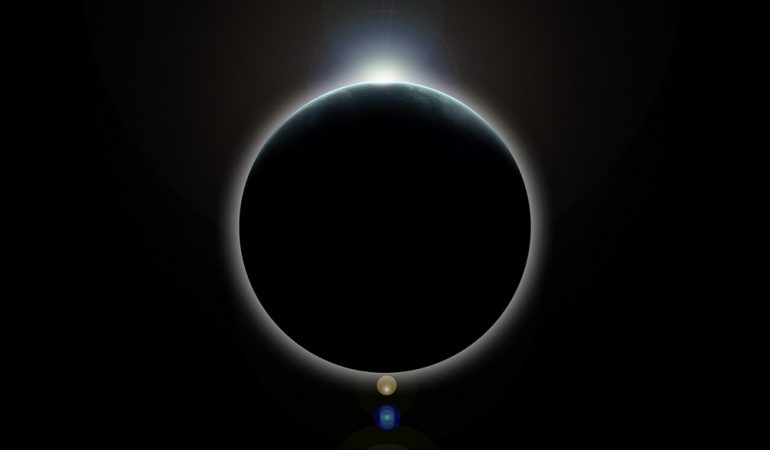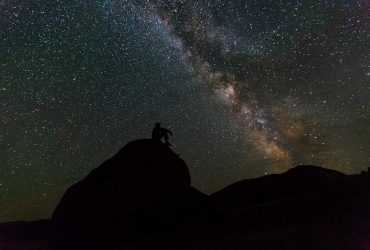Astronomy Calendar 2017: Top Sky Events Not To Be Missed This Year
Stargazers unite! Whether you’re a fan of meteor showers, eclipses or the occasional comet visitation, 2017 promises to be a stellar year (pun fully intended) for sky-watchers the world over. Below are some of the top astronomical events slated for 2017 as reported by some of the top astronomy websites, so be sure to set your reminders!
1. Comet 45P/HMP (February 11)
The first half of February promises to bring us a visit from Comet 45P/Honda-Mrkos-Pajdusakova, which rounded the sun in late December 2016 and is now making its way back to the outer solar system. The best time for you to catch this celestial denizen will be in the dawn hours, as it appears to pass across the constellations Hercules and Aquilas.
By February 11, Comet 45P/HMP will reach the point at which it will be closest to Earth, with only 7.7 million miles between us. At that time, you should be able to catch a decent glimpse of this comet with the naked eye, as it will appear as a small hazy ball in the sky.
2. Annular Eclipse (February 26)
For the uninitiated, an annular eclipse is an eclipse of the sun in which the outer edges of the sun appear to create a bright ring (often called a “ring of fire”) around the moon. Also commonly called an “annular solar eclipse”, this visually enthralling event takes place when the disk of the moon is too small to fully cover the size of the sun due to their specific positions in space.
This causes the moon to create a silhouette up against the sun’s backdrop, leaving a rim or ring of sunlight surrounding the dark disk. The path of the eclipse will begin over the South Pacific Ocean, and then it will move over South America, and reach its endpoint in Africa.
Fortunately, the other parts of the world aren’t completely out of luck; they can still enjoy witnessing a partial solar eclipse that will be nothing short of stunning.
3. The Mercury/Mars/Moon Triangle (March 29)
This fascinating celestial formation will take place after sunset, when the thin crescent moon first begins to become visible. At that point, you will begin to see the moon forming one corner of a triangle, with Mercury and Mars being the other two corners (Mars will be at the top). The thing that really makes this event stand out is that it happens when Mercury is at its highest and brightest position in our sky.
4. The Moon Meeting Jupiter (April 10)
Jupiter, the largest planet in our solar system, will be paired up with Spica (the brightest star in the constellation Virgo) throughout the year 2017, but on April 10, things take an even more interesting turn when Jupiter and the full moon also pair up. After the sun sets in the west on this night, both celestial bodies will begin to rise in the east, putting on an impressive visual display.
Also take note that during this time, Jupiter will be transitioning out of opposition, which is the time when it’s at its biggest and brightest in our night sky.
5. Total Solar Eclipse (August 21)
This mesmerising astronomical event hasn’t crossed over the North American continent since 1979, and it promises to be a must-see phenomenon over the United States on August 21. From Orgeon all the way to South Carolina, this total solar eclipse will temporarily transform daytime skies into nighttime vistas.
It is being estimated that several cities will experience a total blackout, and other areas will witness a partial eclipse. Most viewing locales will be within a day’s drive for the majority of the U.S. population, but if you happen to miss it, you’re out of luck for the next seven years – it won’t return to the U.S. again until 2024.
6. Venus and Jupiter Join Together (November 13)
Talk about close encounters of the celestial kind – Venus and Jupiter will have a close meeting in the lower eastern sky on November 13, as they will be separated by just 18 arc-minutes, which is a unit of angular measurement equal to 1/60th of one degree.
Keep in mind that this captivating event will take place quite low on the horizon at dawn, which means that the two heavenly bodies will be competing with burgeoning sunlight. For this reason, be sure to bring some binoculars or good portable telescope with you for optimal viewing.
7. Geminid Meteors (December 14)
Observers in the UK will be able to catch the spectacular annual Geminid meteor shower late in the evening on December 13, and in the pre-dawn hours of the next day. Expect to be wowed as anywhere between 60-120 shooting stars per hour will illuminate the night skies.
Alright, you’ve got your agenda set and your reminders in place. Now enjoy all of the natural beauty that these amazing astronomical events will bring us in 2017!



